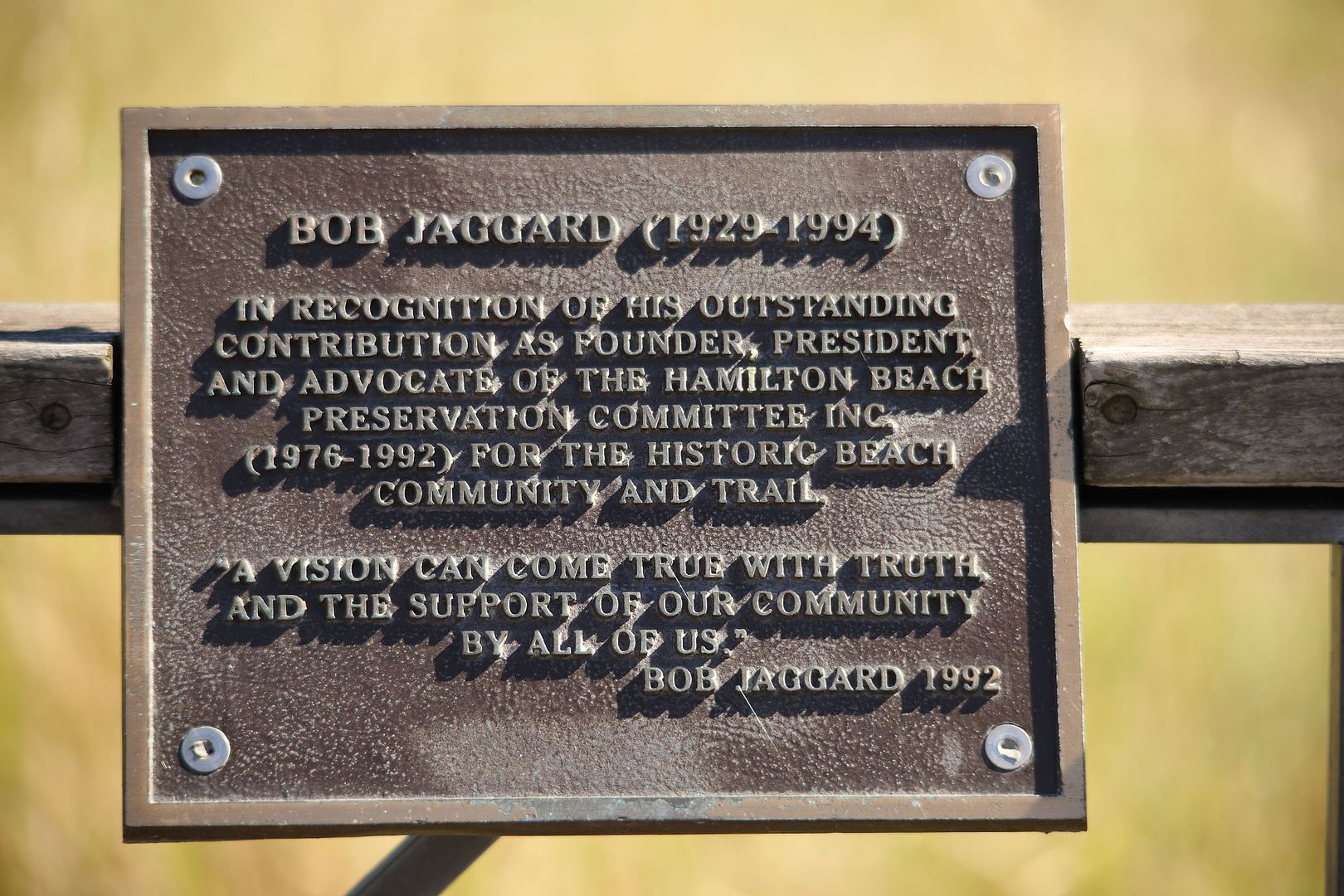From the book, Do Something About It: The Bob Jaggard Story, Chapter two.
Hamilton Beach Preservation Committee (HBPC)
ERNESTINE MASSIGNANI
Ms. Massignani is a long-time Beach resident, and has held various executive positions with the HBPC,
I first met Bob when he was a bus driver down here on Beach Boulevard. Right away I could tell he was a nice man. You couldn't find a better bus driver. If he would see somebody with parcels or something he would actually get up and help them. He was really one of the really good guys.
Shortly after I met Bob he joined the Hamilton Beach Preservation Committee and I joined soon after him. The committee had been around in one form or another for years, but it was in 1980 that Bob became very active in it. In that year Bob was vice-president of the committee under Jacqueline Foley. Then she stepped down and he was elected president. He stayed president for many years.
Bob's first big campaign with the committee was against a 1980 proposal put forward by the City of Hamilton to make the Hamilton Beach Strip a "Green Belt". The city began a property acquisition program. Bob started to fight them. We got a petition together of the people who didn't want to sell. Bob was always going to City Hall. Every week there was a meeting to go to.
The idea of community was important to Bob. That was the most important thing to him. He just loved living down here. He wanted to see the community stick together.
The committee decided to hire a private consulting firm to draw up plans for the Beach as a revitalized residential and commercial community. We used to have everything down here. You name it, we had it Dynes Hotel, an amusement park, a bowling alley, a butcher, a grocery store. This plan envisioned bringing it all back again. We presented it to the city. At first they agreed to it, but then they changed their mind. But we kept pushing and eventually the city changed their mind.
After this Bob worked through the committee to do what he could to help promote neighbourhood togetherness. He started a paper recycling drive to raise money for the committee. Every third Saturday of the month Bob would bring his Ford Bronco over here with a trailer on the back and we'd go up and down the streets. The people would leave old newspapers outside the door and we'd pick it up and take it uptown to a recycling plant on Ferguson Avenue. We got to know everybody up and down the Beach, because everybody put their paper out.
We did a lot of things to help raise money; we had dances, Halloween parties. Bob was there for all of it. We also started the Annual Beach Community Garage Sale. One year we put up flyers saying that on every second Sunday in July there was going to be a garage sale. When we had it, Bob would go from one booth to another collecting donations that would go to the committee. It was great. I think at the first one we had over 20,000 people come down. You couldn't drive down Beach Boulevard, you had to walk.
A little later the city approached us and said they wanted to build a new playground. They said if the community would put in $5500, they would contribute $11,000. We collected so much money from these various events that we gave the city over $7000. Without this the park wouldn't have been built or have all the swings and new equipment in it. We worked hard for that.
Bob also started a Clean-Up Day down here. Once a year he would hand garbage bags out to a group of volunteers and they would go down to the beach or up and down the street and pick up garbage.
I think Bob brought this community a sense of togetherness. I think there was a strong sense of community as long as Bob was alive. If you had a complaint or something all you had to do was call him. He had a saying: "N-O P-R-O-B-L-E-M." It didn't matter what it was, he would always say, "No problem." You could call him in the middle of the night - "No problem, I'll be there".
He did a lot for the Beach. I remember during the Green Belt battle he would tell people "just clean up, paint your house, we're staying." He was an optimist. But it paid off. Just look around - we're still here.
